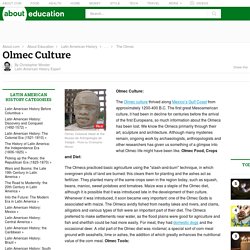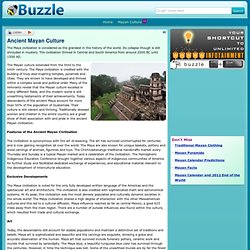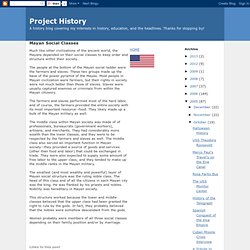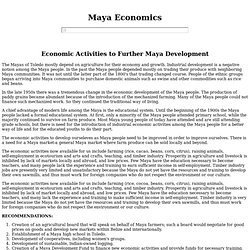Zoom
Trash

Olmec Culture. Olmec Culture: The Olmec culture thrived along Mexico’s Gulf Coast from approximately 1200-400 B.C.

The first great Mesoamerican culture, it had been in decline for centuries before the arrival of the first Europeans, so much information about the Olmecs has been lost. We know the Olmecs primarily through their art, sculpture and architecture. Although many mysteries remain, ongoing work by archaeologists, anthropologists and other researchers has given us something of a glimpse into what Olmec life might have been like. Olmec Food, Crops and Diet: The Olmecs practiced basic agriculture using the "slash-and-burn" technique, in which overgrown plots of land are burned: this clears them for planting and the ashes act as fertilizer. Olmec Tools: In spite of only having Stone-age technology, the Olmecs were able to make several sorts of tools which made their life easier.
Olmec Homes: Olmec Towns and Villages: Olmec Religion and Gods: Ancient Mayan Culture. The Mayan culture extended from the third to the ninth century.

The Maya civilization is credited with the building of truly awe-inspiring temples, pyramids and cities. They are known to have developed and thrived within a complex social and political order. Many of the remnants reveal that the Mayan culture excelled in many different fields, and the modern world is still unearthing testaments of their achievements. Mayan Social Classes. Much like other civilizations of the ancient world, the Mayans depended on their social classes to keep order and structure within their society.

The people at the bottom of the Mayan social ladder were the farmers and slaves. These two groups made up the base of the power pyramid of the Mayas. Most people in Mayan civilization were farmers, but their rights in society were not much better than those of slaves. Slaves were usually captured enemies or criminals from within the Mayan citizenry. Maya Economics. The Mayas of Toledo mostly depend on agriculture for their economy and growth.

Industrial development is a negative notion among the Maya people. In the past the Maya people depended mostly on trading their produce with neighboring Maya communities. It was not until the latter part of the 1800's that trading changed course. People of the ethnic groups began arriving into Maya communities to purchase domestic animals such as swine and other commodities such as rice and beans.
In the late 1950s there was a tremendous change in the economic development of the Maya people. A chief advantage of modern life among the Maya is the educational system. The economic activities to develop ourseleves as Maya people need to be improved in order to improve ourselves. The economic activities now available for us include farming (rice, cacao, beans, corn, citrus), raising animals, self-employment in ecotourism and arts and crafts, teaching, and timber industry.
Economy slide. MAYAN culture. Interactions. The Maya civilization shares many features with other Mesoamerican civilizations due to the high degree of interaction and cultural diffusion that characterized the region.

Although the advances such as writing, epigraphy and the calendar did not originate from the Maya, they fully developed them impressively. They built on these inventions and ideas developed by nearby cultures such as the Olmec. They also share aspects of their culture with the Toltec of Northern Mexico. Archeologists have not settled the relationship between the Olmecs and the Mayans, and it is a mystery whether the Mayans were their descendants, trading partners, or had another relationship. The Olmec, however, seem to have passed down their culture and social structure to later, more elaborate civilizations, such as the Maya.
Many outside influences are found in Maya art and architecture, which are thought to result from trade and cultural exchange rather than direct external conquest. Politics. The Ancient Maya shared a similar ideology and worldview, but they were never united as a single empire.

Instead, the Maya lived in individual political states that were linked together through trade, political alliances, and tribute obligations. Some of these states were independent, while others were part of larger political hierarchies. The Maya states were initially governed by simple chiefdoms. By the Classic Period, Maya governance had taken on the form of powerful centralized leaders who legitimized their authority through their political connections and their divine lineages. Individuals who disobeyed their rulers faced severe punishment because the Maya people believed that obedience to their leader was critical to maintaining the harmony of the Maya universe.